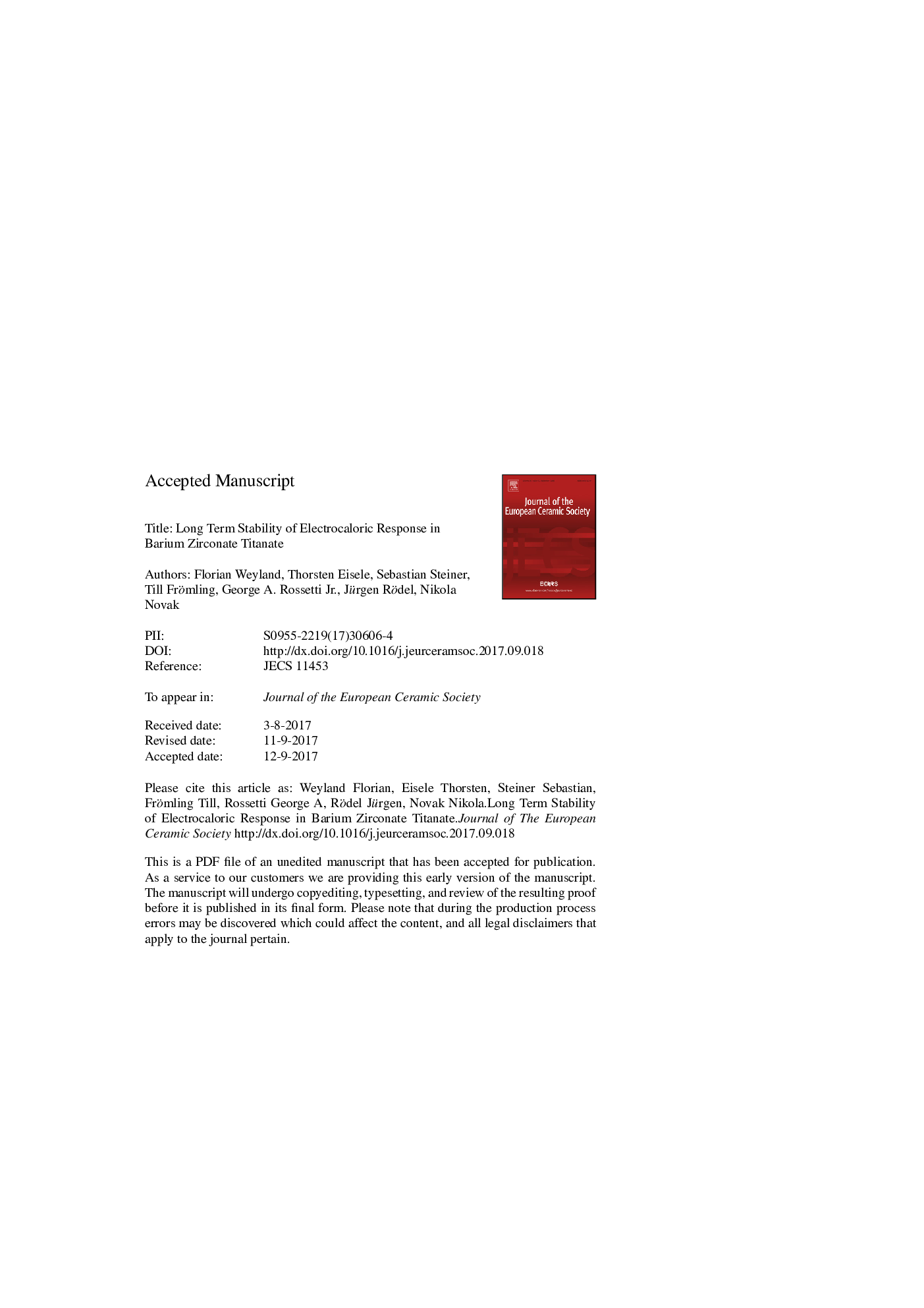| Article ID | Journal | Published Year | Pages | File Type |
|---|---|---|---|---|
| 7898696 | Journal of the European Ceramic Society | 2018 | 19 Pages |
Abstract
The stability of the electrocaloric effect under electric field cycling is an important consideration in the development of solid-state cooling devices. Here we report measurements carried out on Ba(Zr0.2Ti0.8)O3 ceramics which reveal that the adiabatic temperature change, polarization-electric field hysteresis loops and dielectric permittivity/loss show stable behavior up to 105 cycles. We further demonstrate that the loss in electrocaloric response observed after 105 cycles is associated with the migration of oxygen vacancies. As a result, the electrical properties of the material are changed leading to an increase in leakage current and Joule heating. Reversing the polarity of the electric field after every 105 cycles changes the migration direction of oxygen vacancies, thereby preventing charge accumulation at grain boundaries and electrodes. By doing so, the electrocaloric stability is improved and the adiabatic temperature remains constant even after 106 cycles, much higher than achieved in commercially available barium titanate ceramics.
Related Topics
Physical Sciences and Engineering
Materials Science
Ceramics and Composites
Authors
Florian Weyland, Thorsten Eisele, Sebastian Steiner, Till Frömling, George A. Jr., Jürgen Rödel, Nikola Novak,
